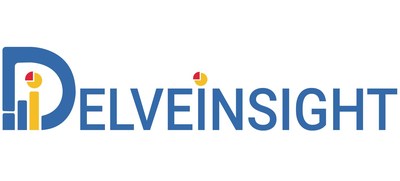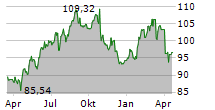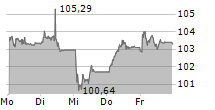The achondroplasia market size shall grow during the forecast period (2023-2032) due to the launch of upcoming therapies and the increasing cases of achondroplasia. This achondroplasia market is expected to increase at a significant rate.
LAS VEGAS, Jan. 9, 2024 /PRNewswire/ -- DelveInsight's Achondroplasia Market Insights report includes a comprehensive understanding of current treatment practices, achondroplasia emerging drugs, market share of individual therapies, and current and forecasted market size from 2019 to 2032, segmented into 7MM [the United States, the EU4 (Germany, France, Italy, and Spain) and the United Kingdom, and Japan].

Key Takeaways from the Achondroplasia Market Report
- According to DelveInsight's analysis, the market size for achondroplasia reached USD 198 million in 2022 across the 7MM and is expected to grow with a significant CAGR by 2032.
- DelveInsight's analysis reveals that the overall diagnosed prevalent population of achondroplasia in the 7MM was reported as ~29K in 2022. Within this, the diagnosed prevalent population of achondroplasia patients in the United States specifically was identified to be 51% in the same year.
- Globally, leading achondroplasia companies such as Ascendis Pharma, QED Therapeutics (BridgeBio), Novartis, Sanofi, RIBOMIC, BioMarin Pharmaceutical, Pfizer, PhaseBio Pharmaceuticals, and others are developing novel achondroplasia drugs that can be available in the achondroplasia market in the coming years.
- The promising achondroplasia therapies in the pipeline include TransCon CNP (navepegritide), Infigratinib (BBP-831/BGJ398), SAR442501, RBM-007, and others.
- Continuing investigations into the achondroplasia market have uncovered promising treatment options that could mitigate certain symptoms and challenges linked to the condition. Novel therapies such as Ascendis Pharma's TransCon CNP (navepegritide) and QED Therapeutics (BridgeBio)/Novartis' infigratinib (BBP-831/BGJ398) hold promise in addressing the need for more effective treatments. The landscape of achondroplasia treatment is anticipated to shift in the forecast period with the potential approval of these innovative therapies, ushering in new participants to the treatment arena.
Discover which therapies are expected to grab the major achondroplasia market share @ Achondroplasia Market Report
Achondroplasia Overview
Achondroplasia, a rare genetic disorder affecting bone growth, causes significant short stature due to a mutation in the fibroblast growth factor receptor 3 (FGFR3) gene. This mutation results in an overactive FGFR3 gene, slowing bone formation in the cartilage of the growth plate and hindering growth in nearly all bones in the body. The condition is characterized by distinctive features such as short stature, an enlarged head with a prominent forehead and flat nasal bridge, short limbs, a noticeable abdomen and buttocks, and short hands with fingers assuming a "trident" or three-pronged position during extension.
Genetics and family history play a crucial role in the risk of achondroplasia. Studies also indicate that advanced paternal age, particularly fathers aged 35 or older, is associated with significantly higher rates of affected offspring. Achondroplasia diagnosis often involves a physical examination and confirmation through genetic testing. The clinical and radiological features of achondroplasia are well-defined and assist in diagnosis, particularly in neonates and young infants. Prenatal diagnosis is possible through genetic testing, providing parents with information to make informed decisions about their child's healthcare. Additionally, differential diagnosis is conducted to exclude similar conditions like hypochondroplasia, pseudoachondroplasia, thanatophoric dysplasia, and others.
Achondroplasia Epidemiology Segmentation
According to DelveInsight's epidemiology model estimates, achondroplasia exhibits a significant female preponderance than males in EU4 and the UK. Of the total cases, nearly 46% were males and 54% were females.
The achondroplasia market report proffers epidemiological analysis for the study period 2019-2032 in the 7MM segmented into:
- Total Diagnosed Prevalent Cases of Achondroplasia
- Gender-specific Diagnosed Prevalent Cases of Achondroplasia
Achondroplasia Treatment Market
At present, there are no curative remedies for achondroplasia, and the existing treatment options encompass both pharmaceutical and non-pharmaceutical approaches. Various achondroplasia treatments are targeted at addressing specific challenges associated with achondroplasia. Pharmacological measures involve the use of CNP analogs and other medications to alleviate symptoms and manage complications. Additionally, the consideration of growth hormone therapy as a treatment for achondroplasia exists, but its long-term efficacy is a subject of debate and is currently sanctioned only in Japan.
The approach to addressing achondroplasia in the United States has historically focused on managing symptoms. However, a significant development occurred in 2021 with the approval of the first achondroplasia treatment, VOXZOGO (vosoritide), by the US FDA. This approval, initially for children aged 5 and above with achondroplasia, marked a shift in the management landscape, allowing for the enhancement of growth potential. Subsequently, in 2023, the FDA extended the drug's label to include pediatric patients with achondroplasia who have open epiphyses (growth plates). VOXZOGO, a C-type natriuretic peptide (CNP) analog, functions as a positive regulator of the downstream signaling pathway of FGFR3, promoting endochondral bone growth. However, it should be noted that the drug induces temporary changes in blood pressure and necessitates daily subcutaneous injections, leading to potential injection site reactions.
In addition to VOXZOGO, various other medications are employed to address the complications of achondroplasia and offer symptomatic relief. This includes the use of statins, antihistamines, and growth hormones. Statins, a class of medications inhibiting cholesterol synthesis, exert an anabolic effect on chondrocytes and counteract FGFR3 signaling. Nonetheless, further research is required to elucidate whether statins have a positive impact on chondrocytes.
To know more about achondroplasia treatment guidelines, visit @ Achondroplasia Management
Achondroplasia Pipeline Therapies and Key Companies
- TransCon CNP (navepegritide): Ascendis Pharma
- Infigratinib (BBP-831/BGJ398): QED Therapeutics (BridgeBio)/Novartis
- SAR442501: Sanofi
- RBM-007: RIBOMIC
Learn more about the FDA-approved drugs for achondroplasia @ Drugs for Achondroplasia Treatment
Achondroplasia Market Dynamics
The dynamics of the achondroplasia are expected to change in the coming years. Historically, treatment options for achondroplasia were restricted, but emerging evidence suggests new therapies, particularly those administered orally, are gaining attention for their convenience and reduced invasiveness, especially in pediatric cases. Given the limited number of approved medications, pharmaceutical companies have an opportunity to innovate by developing novel therapies targeting specific molecular pathways for achondroplasia. The development of affordable and personalized growth hormone therapies aimed at enhancing height and overall physical health in individuals with achondroplasia has the potential to significantly boost their confidence.
Furthermore, many potential therapies are being investigated for the treatment of achondroplasia, and it is safe to predict that the treatment space will significantly impact the achondroplasia market during the forecast period. Moreover, the anticipated introduction of emerging therapies with improved efficacy and a further improvement in the diagnosis rate are expected to drive the growth of the achondroplasia market in the 7MM.
However several factors may impede the growth of the achondroplasia market. While approved therapies like limb lengthening and GH treatments pose potential issues, VOXZOGO, which primarily provides symptom relief but is accompanied by undesired side effects, falls short of offering a cure. The hereditary nature of achondroplasia, passed down through generations without curative interventions, presents challenges for affected individuals initiating their own families. The existing literature and studies probably underestimate the genuine impact of achondroplasia on HRQoL and treatment expenses, restricting its diagnostic application.
Moreover, achondroplasia treatment poses a significant economic burden and disrupts patients' overall well-being and QOL. Furthermore, the achondroplasia market growth may be offset by failures and discontinuation of emerging therapies, unaffordable pricing, market access and reimbursement issues, and a shortage of healthcare specialists. In addition, the undiagnosed, unreported cases and the unawareness about the disease may also impact the achondroplasia market growth.
Achondroplasia Market Report Metrics | Details |
Study Period | 2019-2032 |
Coverage | 7MM [the United States, the EU4 (Germany, France, Italy, and Spain) and the United Kingdom, and Japan]. |
Achondroplasia Market Size in 2022 | USD 198 Million |
Key Achondroplasia Companies | Ascendis Pharma, QED Therapeutics (BridgeBio), Novartis, Sanofi, RIBOMIC, BioMarin Pharmaceutical, Pfizer, PhaseBio Pharmaceuticals, and others |
Key Pipeline Achondroplasia Therapies | TransCon CNP (navepegritide), Infigratinib (BBP-831/BGJ398), SAR442501, RBM-007, and others |
Scope of the Achondroplasia Market Report
- Therapeutic Assessment: Achondroplasia current marketed and emerging therapies
- Achondroplasia Market Dynamics: Key Market Forecast Assumptions of Emerging Achondroplasia Drugs and Market Outlook
- Competitive Intelligence Analysis: SWOT analysis and Market entry strategies
- Unmet Needs, KOL's views, Analyst's views, Achondroplasia Market Access and Reimbursement
Discover more about achondroplasia drugs in development @ Achondroplasia Clinical Trials
Table of Contents
1. | Achondroplasia Key Insights |
2. | Achondroplasia Report Introduction |
3. | Achondroplasia Overview at a Glance |
4. | Achondroplasia Executive Summary |
5 | Achondroplasia Key Events |
6 | Epidemiology and Market Forecast Methodology |
6. | Disease Background and Overview |
7. | Achondroplasia Treatment and Management |
8. | Achondroplasia Guidelines |
9. | Achondroplasia Epidemiology and Patient Population |
10. | Patient Journey |
11. | Key Endpoints in Achondroplasia |
12. | Achondroplasia Marketed Drugs |
13. | Achondroplasia Emerging Drugs |
14. | 7MM Achondroplasia Market Analysis |
15. | Market Access and Reimbursement |
16. | KOL Views |
17. | Unmet Needs |
18. | SWOT Analysis |
19. | Appendix |
20. | DelveInsight Capabilities |
21. | Disclaimer |
22. | About DelveInsight |
Related Reports
Achondroplasia Pipeline
Achondroplasia Pipeline Insight - 2023 report provides comprehensive insights about the pipeline landscape, pipeline drug profiles, including clinical and non-clinical stage products, and the key achondroplasia companies, including BioMarin Pharmaceutical, Ascendis Pharma, QED Therapeutics (BridgeBio), Pfizer, PhaseBio Pharmaceuticals, Ribomic, among others.
Achondroplasia Epidemiology Forecast
Myocardial Infarction Epidemiology Forecast - 2032 report delivers an in-depth understanding of the disease, historical and forecasted achondroplasia epidemiology in the 7MM, i.e., the United States, EU5 (Germany, Spain, Italy, France, and the United Kingdom), and Japan.
Growth Hormone Deficiency Market
Growth Hormone Deficiency Market Insights, Epidemiology, and Market Forecast - 2032 report deliver an in-depth understanding of the disease, historical and forecasted epidemiology, market share of the individual therapies, and key growth hormone deficiency companies including Ascendis Pharma, OPKO Health, Aravive, among others.
Growth Hormone Deficiency Pipeline
Growth Hormone Deficiency Pipeline Insight - 2023 report provides comprehensive insights about the pipeline landscape, pipeline drug profiles, including clinical and non-clinical stage products, and the key growth hormone deficiency companies, including Ascendis Pharma, OPKO Health, Aravive, among others.
About DelveInsight
DelveInsight is a leading Business Consultant and Market Research firm focused exclusively on life sciences. It supports pharma companies by providing comprehensive end-to-end solutions to improve their performance. Get hassle-free access to all the healthcare and pharma market research reports through our subscription-based platform PharmDelve.
Contact Us
Shruti Thakur
info@delveinsight.com
+91-9650213330
www.delveinsight.com
Logo: https://mma.prnewswire.com/media/1082265/DelveInsight_Logo.jpg
![]() View original content:https://www.prnewswire.co.uk/news-releases/achondroplasia-treatment-drug-market-to-register-positive-growth-by-2032-assesses-delveinsight--key-companies-in-the-market---ascendis-pharma-qed-therapeutics-bridgebio-novartis-sanofi-ribomic-302029275.html
View original content:https://www.prnewswire.co.uk/news-releases/achondroplasia-treatment-drug-market-to-register-positive-growth-by-2032-assesses-delveinsight--key-companies-in-the-market---ascendis-pharma-qed-therapeutics-bridgebio-novartis-sanofi-ribomic-302029275.html





